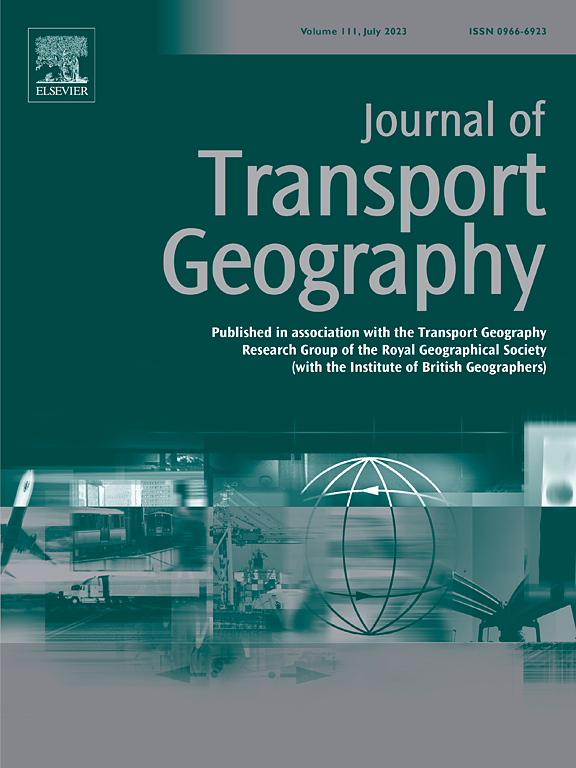Stuck in the sustainable mobility transition: A spatial analysis of transport poverty risk in the Netherlands
IF 6.3
2区 工程技术
Q1 ECONOMICS
引用次数: 0
Abstract
Mobility policies aiming to reduce the use of fossil fuel vehicles put households that cannot afford sustainable transport alternatives at risk of transport poverty - i.e. limited access to work, health-care, education and social relationships. We exploit a unique set of administrative microdata covering 98 % of all privately owned fossil fuel cars in The Netherlands to calculate and map in detail, for the first time, how many households are at this risk of ‘getting stuck’ in the transition towards sustainable mobility. We find that a small group (1–3 %) of highly car-dependent Dutch households is at risk of transport poverty. In comparison with the general population, households at-risk of transport poverty drive older cars, display higher shares of single-parent families, and rely more heavily on social benefits; two-thirds of them also deal with energy poverty. Transport poverty risk shares are highest in rural areas, but absolute numbers peak in medium-sized cities. Generic excise duty reduction policies (as applied in the Netherlands) prove ineffective in supporting the most vulnerable households. This calls for targeted policy measures, while the (sub)urban context of the majority of these households suggests that improving metropolitan public transport networks and stimulating the adoption of e-bikes among low-income groups could potentially alleviate transport poverty.
陷入可持续交通转型:荷兰交通贫困风险的空间分析
旨在减少使用化石燃料车辆的交通政策使无法负担可持续交通替代品的家庭面临交通贫困的风险,即工作、保健、教育和社会关系的机会有限。我们利用一套独特的行政微观数据,覆盖了荷兰98%的私人拥有的化石燃料汽车,首次详细计算和绘制了有多少家庭在向可持续移动的过渡中面临“陷入困境”的风险。我们发现一小部分高度依赖汽车的荷兰家庭(1 - 3%)面临交通贫困的风险。与一般人群相比,面临交通贫困风险的家庭驾驶较旧的汽车,单亲家庭的比例更高,更依赖社会福利;其中三分之二还涉及能源贫困问题。交通贫困风险比例在农村地区最高,但绝对数字在中等城市达到峰值。一般消费税减免政策(如在荷兰实施的)在支持最脆弱的家庭方面证明是无效的。这需要有针对性的政策措施,而大多数这些家庭的(次)城市背景表明,改善大都市公共交通网络和刺激低收入群体采用电动自行车可能会缓解交通贫困。
本文章由计算机程序翻译,如有差异,请以英文原文为准。
求助全文
约1分钟内获得全文
求助全文
来源期刊

Journal of Transport Geography
Multiple-
CiteScore
11.50
自引率
11.50%
发文量
197
期刊介绍:
A major resurgence has occurred in transport geography in the wake of political and policy changes, huge transport infrastructure projects and responses to urban traffic congestion. The Journal of Transport Geography provides a central focus for developments in this rapidly expanding sub-discipline.
 求助内容:
求助内容: 应助结果提醒方式:
应助结果提醒方式:


